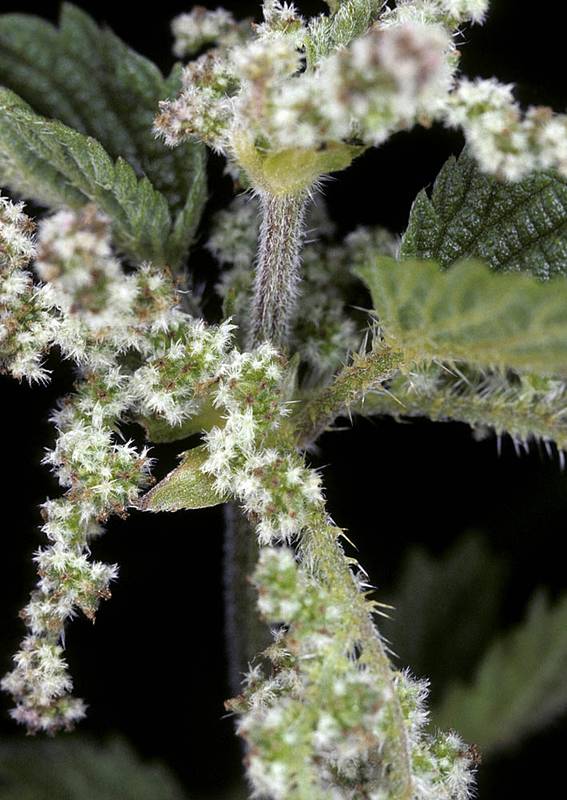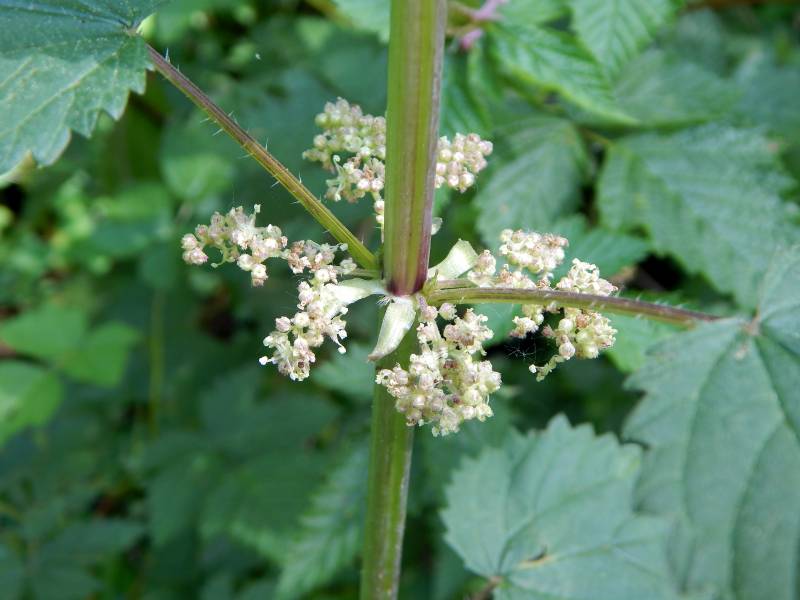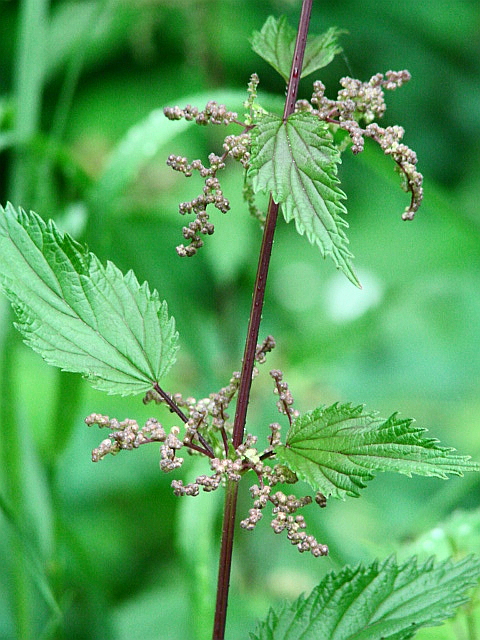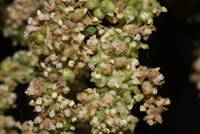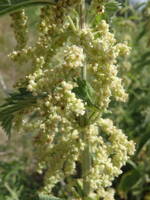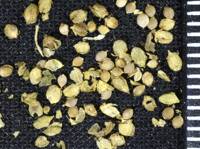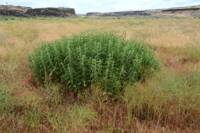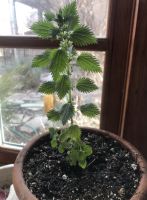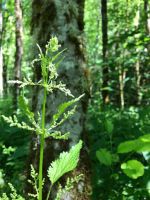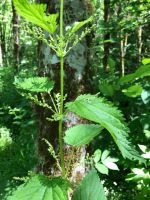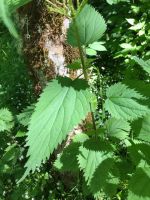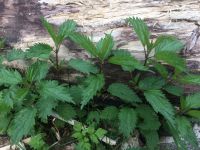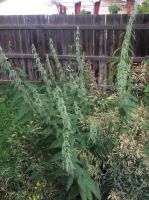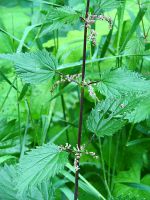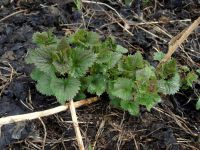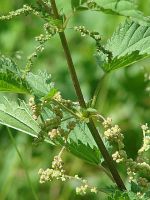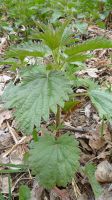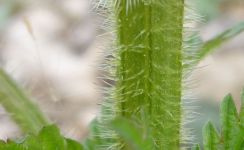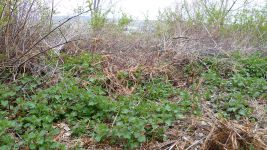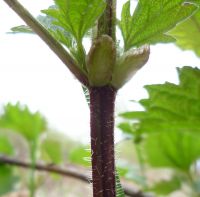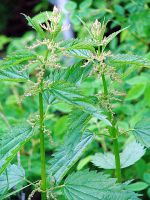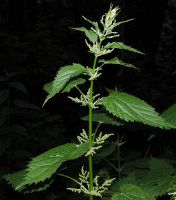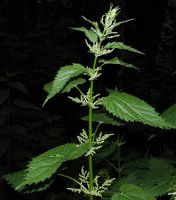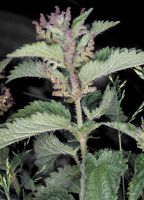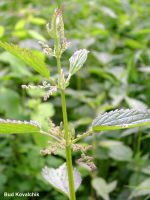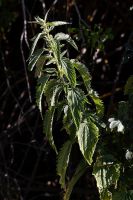Distribution: Widely distributed on both sides of the Cascades crest in Washington; Alaska to California, east across North America to the Atlantic Coast.
Habitat: In deep, rich soil or near moisture, sagebrush deserts, shady lowlands and mountain slopes, sea level to subalpine.
Flowers: May-September
Origin: Introduced from Eurasia
Growth Duration: Perennial
Conservation Status: Not of concern
Pollination: Wind
Strongly rhizomatous perennial 1-3 m. tall with stinging hairs, glabrous except for the stinging hairs to bristly and silky-pubescent.
Leaves opposite, petiolate, 7-15 cm. long, the blade from narrowly lanceolate and acute at the base to broadly ovate and cordate, coarsely serrate; stipules prominent, 10-15 mm. long.
Flowers clustered in the axils, in panicles or branching spikes, greenish, apetalous and imperfect; pistillate flowers uppermost, with 4 unequal calyx lobes, 1-celled pistil, and capitate stigma; staminate flowers with 4 pubescent calyx lobes 1-2 mm. long and 4 stamens.
Achene 1.5 mm. long, flattened.
Flora of North America, Vol. 3: "The tip of the stinging hair breaks off upon slight contact, leaving a sharp point that readily pierces skin and allows fluid contents of the hair to enter flesh through the body of the hair, which acts as a miniature hypodermic needle."
Publication: Sp. Pl. 2: 984. 1753.
-
ssp. dioica – stinging nettle
 Occurring in scattered locations on both sides of the Cascades crest in Washington; Alaska to California, also in eastern North America.
Occurring in scattered locations on both sides of the Cascades crest in Washington; Alaska to California, also in eastern North America.
PNW Herbaria: Specimen records of Urtica dioica in the Consortium of Pacific Northwest Herbaria database
WA Flora Checklist: Urtica dioica checklist entry
OregonFlora: Urtica dioica information
E-Flora BC: Urtica dioica atlas page
CalPhotos: Urtica dioica photos

